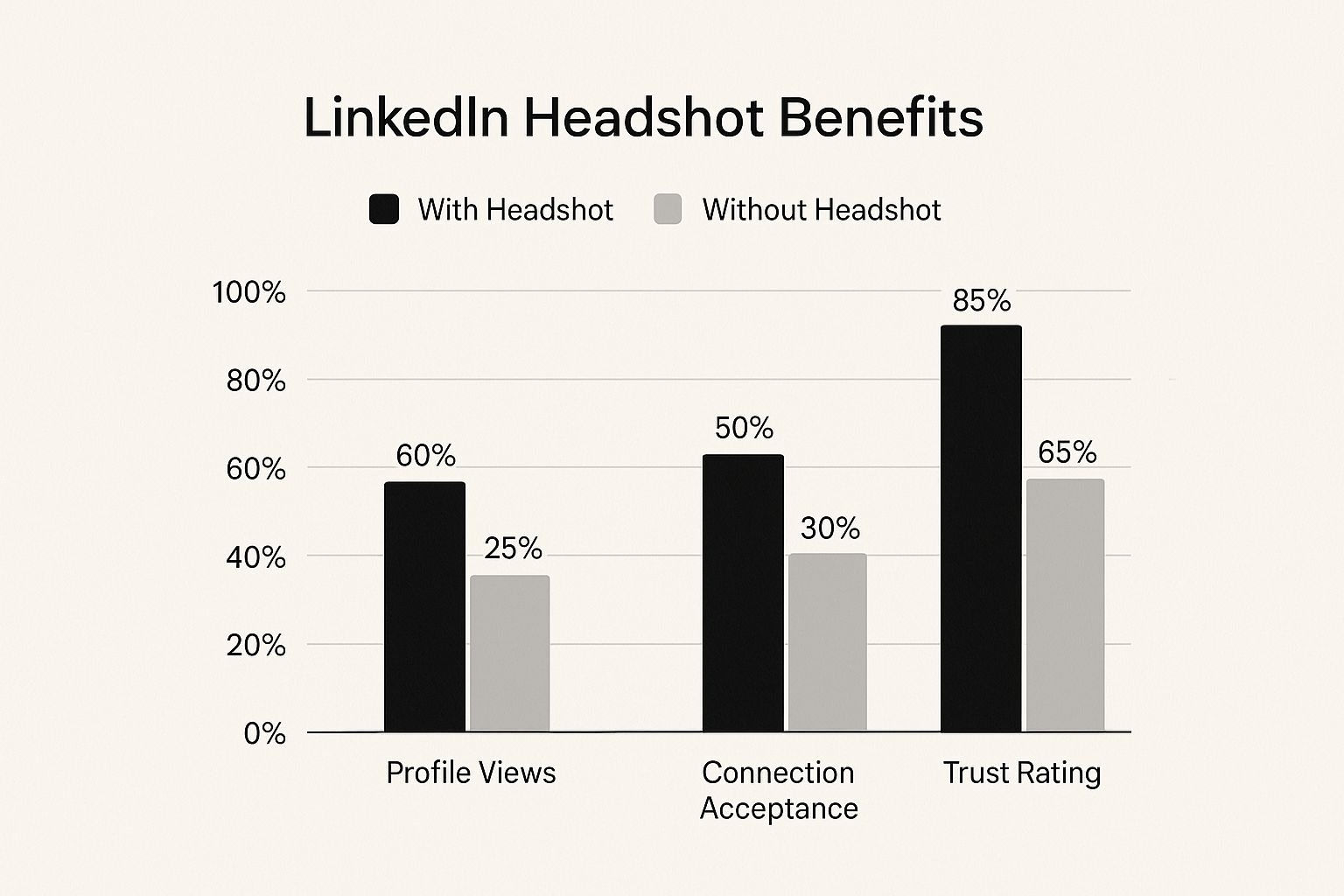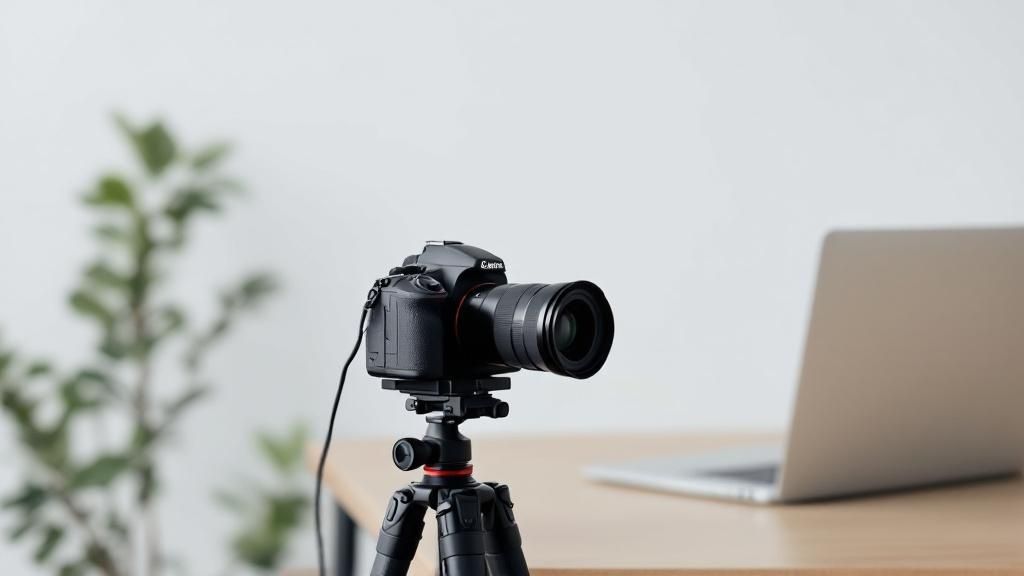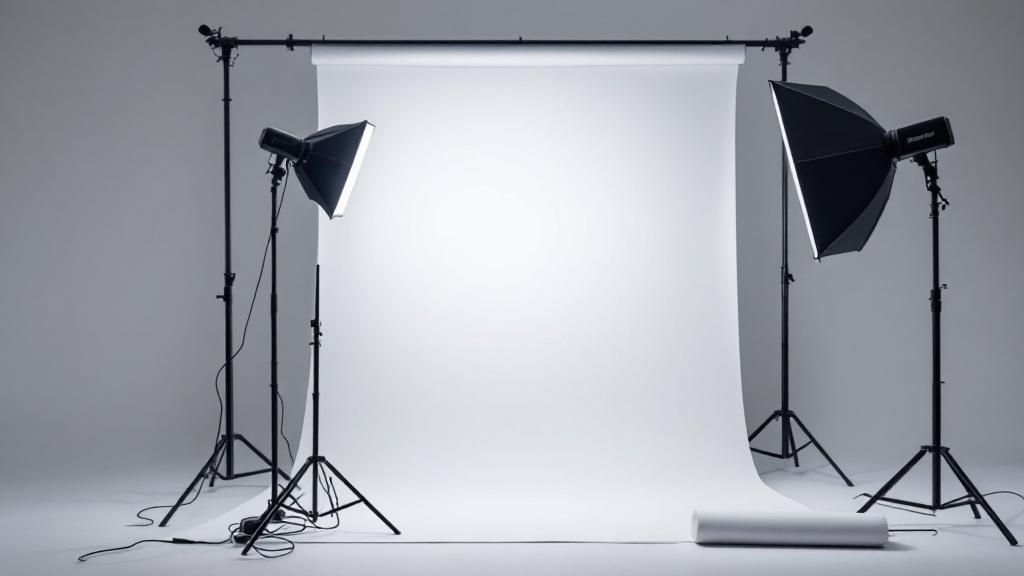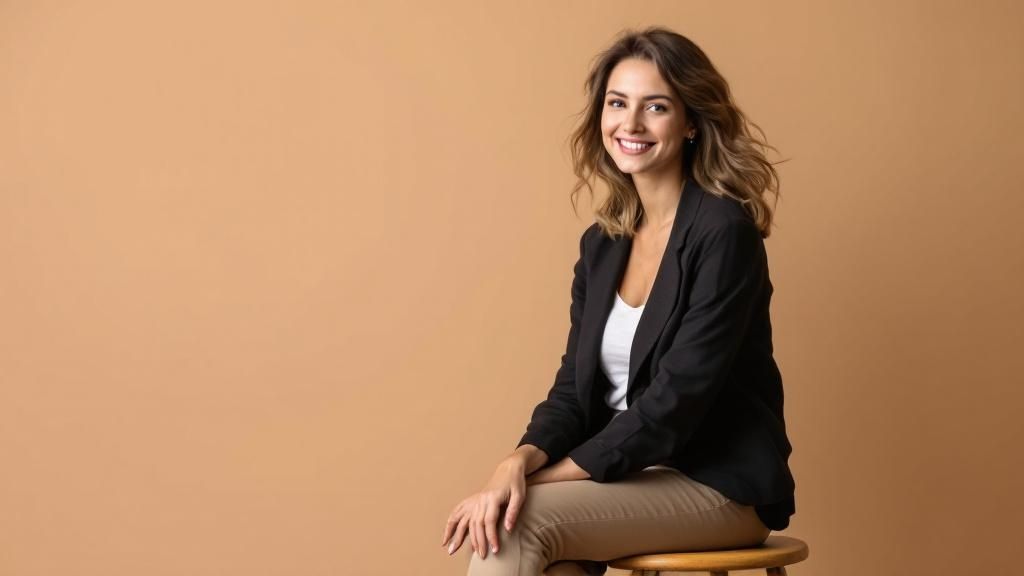How To Take A Professional Headshot For LinkedIn: UK Guide
By Stephen on June 3, 2025
Why Your LinkedIn Headshot Changes Everything
Your LinkedIn headshot is the first thing people see. In the UK's competitive job market, it's your digital handshake, the visual introduction before any online interaction. Its influence is more significant than many realize. Investing in a quality headshot is an investment in your career.
The Power of a Professional Image
A strong headshot isn't just about looking good; it directly affects your professional success. It shapes how recruiters, hiring managers, and potential connections see your competence and trustworthiness. A blurry selfie can imply a lack of attention to detail, while a professional headshot conveys professionalism and confidence.
The following infographic shows how a professional LinkedIn headshot impacts key metrics:

Professionals with professional headshots see significant improvements. Profile views increase by 60% (compared to 25% without), connection acceptance rates rise by 50% (compared to 30%), and trust ratings reach 85% (compared to 65%). This data highlights the need for a polished LinkedIn image. Learn more: How to master your professional photo on LinkedIn.
Making the Most of LinkedIn in the UK
In the UK, a professional LinkedIn headshot isn't just about aesthetics; it's vital for career growth. With millions using LinkedIn daily, it's a key tool for job seekers and businesses. Approximately 75% of people use LinkedIn for job searching, and 7 people are hired every minute. This high usage emphasizes the importance of a professional image. In traditional fields like banking, law, or medicine, a standard business headshot is preferred, conveying professionalism and trust. Investing in one significantly boosts visibility and credibility. For more statistics, see: LinkedIn Statistics.
Optimizing Your Entire Profile
Focus on visuals and text. A LinkedIn Headline Generator can help craft a compelling headline. Combined with a strong headshot, this creates a powerful first impression and encourages viewers to explore your skills and experience. A profile summary that accurately reflects your career path and goals also impacts how recruiters and potential clients view you.
To understand industry-specific headshot preferences, consider the following table:
Professional Headshot Impact by UK Industry
Comparison of headshot requirements and expectations across different UK professional sectors
| Industry | Preferred Style | Key Requirements | Career Impact |
|---|---|---|---|
| Finance | Corporate, Traditional | High quality, conservative attire | Projects trustworthiness, competence |
| Law | Formal, Business | Neutral background, professional attire | Reinforces authority, credibility |
| Creative Industries | Modern, Expressive | May allow for more personality and creativity | Showcases individuality, innovation |
| Technology | Contemporary, Approachable | High quality, often less formal | Conveys innovation, accessibility |
| Healthcare | Professional, Compassionate | Friendly expression, often in medical attire | Builds trust, patient rapport |
This table highlights how different industries value specific headshot styles. While traditional sectors prefer formal images, creative fields may welcome more personality. Tailoring your headshot to your industry strengthens your personal brand.
A professional headshot is crucial for a successful LinkedIn profile. It significantly impacts your visibility and career prospects in the UK. By investing in a high-quality image, you demonstrate your professionalism and build a strong personal brand.
Setting Up Your Home Studio For Success

Creating a professional headshot for your LinkedIn profile doesn't require renting a pricey studio. You can achieve impressive results right at home with just a few key pieces of equipment and some know-how. This section will guide you through setting up a home studio that delivers professional-quality headshots, no matter your budget.
Choosing the Right Camera and Lens
Your camera is the core of your headshot setup. While professional DSLRs offer advanced control, even a modern smartphone can capture excellent headshots. If using a smartphone, ensure your lens is clean and utilize the portrait mode. This feature creates a pleasing blurred background effect, known as depth of field, and keeps the focus sharply on you.
If you're working with a DSLR, select a lens with a focal length between 50mm and 85mm. This range minimizes distortion and is ideal for portrait photography. Lenses in this range accurately represent facial features in a natural and flattering way.
Lighting Your Home Studio
Lighting plays a vital role in achieving a professional look. Natural light offers a beautiful, soft quality, and positioning yourself near a large window on a cloudy day can provide excellent results. The diffused light from an overcast sky minimizes harsh shadows.
For consistent results, especially during the winter months, using artificial lighting is recommended. Affordable LED panels or even carefully positioned lamps can create a professional look. Experiment to find the best placement to achieve even lighting and minimize unwanted shadows. This controlled setup ensures consistent results regardless of the weather or time of day.
Background and Backdrop Options
A clean and simple background is essential for a professional headshot. A plain wall painted in a neutral color is a perfect choice, ensuring that the focus remains on you. Avoid distracting patterns or clutter that can detract from the overall professional image you want to project.
If you have limited space, a portable backdrop is a worthwhile investment. These are readily available online in various colors and materials. Choose a backdrop color that complements your clothing and creates a polished look. Neutral colors like grey or light blue are often excellent choices.
Achieving Sharp Focus and Depth of Field
Sharp focus is paramount. With smartphones, tap the screen to set the focus point on your face. When using a DSLR, use autofocus and adjust your settings for portrait photography. A slightly blurred background, known as depth of field, adds a professional touch and draws the viewer's eye to the subject. You can achieve this effect by using a wider aperture (a lower f-number) on a DSLR or by using portrait mode on a smartphone.
Experiment with different camera settings and review your photos on a larger screen to assess the results. Take multiple shots, varying your pose and expression slightly. This gives you a range of options from which to select the image that best represents you in a professional context. With some practice and attention to these details, your home studio can produce LinkedIn headshots that rival those from professional studios, saving you money and giving you full control over your image.
Mastering Light To Look Your Best

Great lighting can elevate a simple snapshot to a professional-looking headshot. Creating studio-quality lighting at home, especially in UK environments, is more achievable than you might think. This section will guide you through key lighting techniques for presenting your best self on LinkedIn. For a more in-depth guide, check out this helpful resource: How to master your headshot lighting setup.
Harnessing Natural Light
Natural light offers one of the best and most accessible light sources. Positioning yourself near a large window, ideally on an overcast day, provides soft, flattering illumination. This diffused light minimizes harsh shadows, leading to a more natural and professional appearance for your LinkedIn headshot.
Morning window light tends to be cooler and softer, while afternoon light offers warmer tones. Experimenting with different times of day helps determine the lighting that best complements your features. East-facing windows often provide ideal lighting for morning shoots due to their soft, even light.
Creating Soft Illumination with Household Items
You can effectively manipulate light using everyday household items, even without professional equipment. A sheer white curtain acts as a diffuser, softening harsh sunlight and reducing shadows. This simple technique provides easy control over the intensity and quality of light.
Strategically placed lamps with soft white bulbs can supplement natural light, particularly during darker UK winter days. A well-positioned lamp can fill in shadows and create a more even skin tone. Avoid harsh, direct light, as it can be unflattering and emphasize imperfections.
Understanding Three-Point Lighting
Professional photographers often use complex lighting setups, but a simplified three-point lighting system can be easily replicated at home. This system consists of a key light (your main light source), a fill light (to soften shadows cast by the key light), and a backlight (to separate you from the background).
Your key light could be a window, your fill light a reflector made from white card or polystyrene, and your backlight a strategically placed lamp. This affordable setup can drastically improve the quality of your headshots. Similar to structured approaches in other fields, organized lighting significantly enhances results. Studies show that structured methodologies can reduce time spent on tasks by 40% and increase effectiveness by 35%. Learn more about improving efficiency: literature review efficiency.
Tackling Common UK Lighting Challenges
The UK's frequent overcast skies can pose lighting challenges. However, this diffused light is actually advantageous for portraits, minimizing harsh shadows. Even on cloudy days, positioning yourself near a window can yield excellent results.
In smaller spaces, maximizing limited natural light becomes crucial. Reflectors bounce light back onto your face, brightening the image and reducing shadows. Even a simple white card can function as an effective reflector, creating a brighter, more professional look.
Posing And Styling That Commands Respect

Your LinkedIn headshot is often the first impression you make on potential connections and employers. How you pose and present yourself can significantly influence their perception of you. This section explores posing and styling techniques to create a professional headshot that projects both confidence and approachability, drawing on analyses of successful profiles and insights from experienced photographers.
Body Positioning for Natural Confidence
Instead of facing the camera head-on, angling your body slightly can create a more dynamic and engaging image. A subtle turn of about 20-30 degrees adds depth and visual interest to your headshot.
Maintaining good posture is also essential. Relax your shoulders, keep your back straight, and stand tall. This posture conveys confidence and professionalism, making you appear more approachable and trustworthy.
Eye Contact and Facial Expressions
Making direct eye contact with the camera lens is crucial for establishing a connection with the viewer. Look directly into the lens as though you're engaging in a conversation, fostering a sense of engagement and trustworthiness.
Your facial expression should be natural and genuine. A gentle smile can convey warmth and approachability, but avoid an overly broad smile that may seem forced. Aim for a subtle, confident expression that reflects your personality.
Wardrobe Choices That Photograph Well
Choosing the right attire is key to a successful headshot. How to master what to wear for professional headshots offers valuable insights. Select clothing that aligns with professional standards and complements your features. Solid colours, especially blues and greys, often photograph well and project a professional image. Avoid busy patterns or distracting logos.
Consider your industry when selecting your outfit. A suit and tie might be appropriate for some professions, while a smart-casual look might be better for others. Your clothing should reflect your professional brand and personal style.
Grooming and Final Touches
Paying attention to grooming details completes your professional look. Ensure your hair is styled neatly and your overall appearance is polished. For men, a clean shave or well-groomed facial hair is essential.
Makeup should be subtle and enhance your natural features, avoiding anything too heavy or dramatic. These final touches contribute to a polished and professional presentation.
Common Posing Mistakes to Avoid
Certain postures, like slumping or crossing your arms, can project a lack of confidence or disengagement. Similarly, a forced smile or stiff posture appears unnatural. Authenticity is key to a compelling headshot.
Tilting your head excessively is another common mistake. While a slight tilt can be engaging, too much can look awkward. Practicing in front of a mirror can help you find the most flattering and natural pose for your headshot.
Professional Photography Versus AI Solutions
The rise of AI headshots presents intriguing options for professionals looking to improve their LinkedIn profiles. But these new possibilities also raise questions about authenticity and how they're perceived in the UK business world. This section compares traditional professional photography with AI-generated alternatives, exploring the strengths and weaknesses of each, and when they're most appropriate.
Current AI Capabilities and Limitations
AI headshot generators can create surprisingly realistic images from uploaded selfies, often at a fraction of the cost and time of a professional photoshoot. They offer various background options and even different "lighting" styles, allowing for some customization. However, AI can struggle with fine details like hair and glasses, sometimes producing results that look slightly unnatural.
For instance, some AI generators might over-smooth details, creating an artificial appearance. Others might misinterpret complex hairstyles or have difficulty accurately depicting accessories. While AI is constantly improving, these limitations are important to keep in mind.
The Investment: Time and Money
Professional photography requires a larger upfront investment. Costs depend on the photographer's experience and location, but typical sessions in the UK range from £100 to £300. When considering professional photography, it's helpful to understand how to find the right talent. Resources like expert tips on hiring designers can provide valuable guidance. Also, factor in time for the shoot, travel, and potential retouching.
AI headshot generators, on the other hand, typically cost between £15 and £50 for a package of images. The process is much faster. Simply upload your selfies and let the AI generate the headshots. This makes AI a quicker, more budget-friendly choice, especially for those who need headshots quickly.
Authenticity and Professionalism: UK Perceptions
AI-generated headshots are gaining popularity, especially among LinkedIn users in the UK. These AI tools can produce realistic-looking headshots, often less expensively and with more flexibility than traditional photography. But while AI-generated images are convenient, there's ongoing discussion about their authenticity compared to professional photos. One key factor is the need for headshots to reflect a person's current appearance. People generally update their headshots every two to three years or after a significant change in their look. This ensures the image stays relevant and recognizable, which is essential for networking and professional branding. As of 2025, polls on platforms like LinkedIn reveal mixed opinions on the best AI tools, with some users favoring results from specific generators like Secta or HeadshotPro. You can explore further insights on AI-generated headshots.
In some industries, the authenticity of a professionally taken photograph remains highly valued. Recruiters in traditional fields like finance and law often prefer the polished, classic style of professional headshots. They project an air of authority and trustworthiness that some feel AI-generated images lack.
However, in more creative or tech-driven industries, AI headshots are becoming more accepted. The emphasis in these sectors is often on innovation and approachability, making the slightly different aesthetic of AI-generated images less of an issue.
Choosing the Right Approach for Your Needs
Both professional photography and AI solutions offer distinct advantages. Professional photography delivers high-quality, personalized images that convey a strong sense of professionalism. This is especially important for those in formal industries. AI provides speed, affordability, and convenience, making it a good choice for those who want a quick update or have a limited budget. The best choice depends on your individual needs, industry expectations, and budget.
Think about how often you update your professional images. Most people refresh their headshots every two to three years, or after a significant change in appearance. This ensures your LinkedIn profile accurately represents you and remains effective for networking and job searching. By carefully considering the pros and cons of each approach, you can select the method that best supports your professional goals and strengthens your LinkedIn presence.
Editing That Enhances Without Deceiving
A great headshot, even one taken at home, can benefit from subtle editing. However, the goal is enhancement, not a complete transformation. Authenticity is key for a professional LinkedIn headshot. This means presenting a polished version of yourself, not a fabricated image. This section will guide you through essential editing techniques that maintain a natural look while elevating your headshot.
Color Correction for Consistency
Color correction ensures accurate skin tones and consistent color representation across different devices. It's about achieving a natural, balanced look, not drastically altering your appearance. Start by adjusting white balance, which compensates for different lighting conditions. A slightly warm white balance is generally flattering for portraits.
Next, fine-tune brightness and contrast to optimize the overall image. Be subtle; avoid extremes that result in an unnatural look. The aim is to achieve a bright, clear image without losing detail in highlights or shadows.
Subtle Retouching: Removing Distractions
Retouching can remove minor blemishes or distractions, but it's essential to maintain a realistic appearance. Use retouching tools sparingly, focusing on eliminating temporary imperfections rather than fundamentally changing your features.
For example, you might remove a stray hair or a temporary blemish, but avoid over-smoothing skin or reshaping your face. Think of retouching as digital makeup – it enhances your natural features without creating an artificial mask. Over-editing can make your headshot look obviously processed and undermine your credibility. The goal is to present a polished image of yourself, not someone else entirely.
Background Cleanup for a Professional Look
A clean background keeps the focus on you. Simple tools like the clone stamp or healing brush in programs like Adobe Photoshop can remove distracting elements or even out the background tone. This is especially helpful if you're using a simple backdrop that might have minor imperfections.
For example, you might use these tools to remove a small mark on a wall or create a more uniform background color. This clean, professional background ensures that the viewer's attention is drawn to your face and expression.
Software Options: Free and Premium
Several editing software options cater to different skill levels and budgets. Free programs like GIMP offer a comprehensive range of editing tools comparable to premium software. These free options are excellent for basic color correction, retouching, and background cleanup.
Paid software like Adobe Photoshop provides more advanced features and greater control over image manipulation. While these programs offer powerful editing capabilities, they often require a steeper learning curve. Choosing the right software depends on your budget, technical skills, and the complexity of your editing needs.
Avoiding Over-Editing: Common Mistakes
Over-editing is a common pitfall that can make your headshot look unnatural and unprofessional. Avoid excessive skin smoothing, which can create a plastic, artificial look. Similarly, resist the temptation to dramatically reshape your face or features.
Overly saturated colors or excessive contrast can also make your headshot look obviously processed. The goal is to create a natural, believable image that represents you accurately. A subtly enhanced headshot will build trust and convey professionalism on your LinkedIn profile. By adhering to these principles, you can create a professional headshot that elevates your profile without sacrificing your natural look.
Building Your Brand Through Consistent Imagery
Your LinkedIn headshot is more than just a picture; it's a vital part of your professional brand. It's the first visual impression you make online, especially on platforms like LinkedIn. This means your headshot needs to align with your career goals and how you present yourself in your industry.
Aligning Your Headshot With Your Professional Narrative
A strong professional brand tells a story. Your headshot should contribute to that narrative by reflecting your personality and expertise. For instance, a software engineer might go for a modern, friendly look, while a lawyer may prefer a more formal, traditional style. This visual consistency strengthens your professional identity and helps you connect with your audience.
Think about the message you want to convey. Do you aim to appear approachable, authoritative, creative, or innovative? Your expression, pose, and clothing in your headshot can communicate these qualities. A warm smile can project approachability, while a more serious expression can suggest authority and expertise.
Maintaining Visual Consistency Across Platforms
While LinkedIn is often the primary focus for professional headshots, consistency across all online platforms enhances your brand. This includes platforms like your Twitter profile, company website, or personal portfolio. Using the same (or very similar) headshots creates a unified and recognizable online presence.
Consider tailoring your headshot slightly to fit each platform. A casual headshot might be suitable for Twitter, while a more formal one is better for LinkedIn.
When considering professional headshots, especially in the UK, using high-quality images is critical. In 2025, professional headshots are key for building trust and reinforcing brand identity. For individuals, a good headshot strengthens their professional image, making them stand out in the job market. Recruiters and hiring managers often form quick opinions based on profiles, and a professional image can improve your chances in the hiring process. For companies, consistent, high-quality headshots build a unified brand image, conveying professionalism and credibility to clients and stakeholders. This consistency is essential for a strong visual identity. With over 32 million LinkedIn users in Europe, a professional headshot helps you stand out. For further insights, check out this article: Find more detailed statistics here.
Updating Your Headshot Strategically
Your headshot should reflect how you currently look. As your career evolves, so should your image. Consider updating your headshot every two to three years, or after any significant changes to your appearance, such as a new hairstyle, facial hair, or weight fluctuation. This ensures your professional image remains current and recognizable.
Career milestones, like promotions or job changes, are also good reasons for a headshot refresh. Your headshot should reflect your new position or career focus. A new role might call for a more formal image, while a move to a creative industry might warrant a more expressive one.
To help you determine the best time to update your professional headshot, consult the following table:
To help guide your headshot update schedule, consider the following guidelines:
Professional Headshot Update Timeline
Guidelines for when to refresh your professional headshot based on career stage and industry changes
| Career Stage | Update Frequency | Key Triggers | Investment Level |
|---|---|---|---|
| Entry-Level | Every 2-3 years | New job, significant appearance change | Moderate |
| Mid-Career | Every 1-2 years | Promotion, industry shift, personal rebranding | Moderate to High |
| Senior/Executive | Annually or as needed | Major career move, company rebranding | High |
This table outlines some general recommendations for updating your headshot. Remember to adapt these guidelines to your specific situation and industry.
Building a Library of Professional Images
As your career grows, a library of professional images becomes a valuable asset. This could include different versions of your headshot—various poses, expressions, and outfits—suitable for different purposes.
You might have a formal headshot for LinkedIn, a more relaxed photo for your company website, and a friendly image for conference badges or speaker bios. A variety of images allows you to adapt your visual presentation to various contexts, making your professional image more versatile.
Measuring the Impact of Your Imagery
While the impact of a professional headshot isn't always easily measured, you can assess its effectiveness. For instance, track your LinkedIn profile views, connection requests, and engagement after updating your headshot. Increased activity could indicate that your new headshot is making a positive impact.
Also, consider the quality of your connections. Are you connecting with people in your target industry or at companies you admire? A strong headshot can enhance your perceived professionalism and attract more relevant connections.
Long-Term Strategies for Image Management
Maintaining a consistent and professional image is an ongoing process. This includes regularly reviewing and updating your headshots, and adapting your visual brand as your career progresses.
Consider investing in professional photography or using AI-powered tools like LinkedInHeadshots.ai. These solutions can help you create high-quality, professional images. Ready to improve your LinkedIn profile and professional brand? Explore the power of AI-generated headshots with LinkedInHeadshots.ai and reach your full professional potential. Transform your selfies into polished, professional headshots quickly and easily.